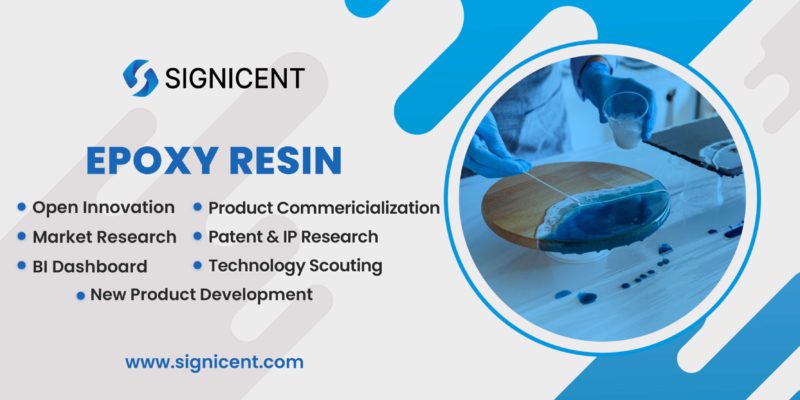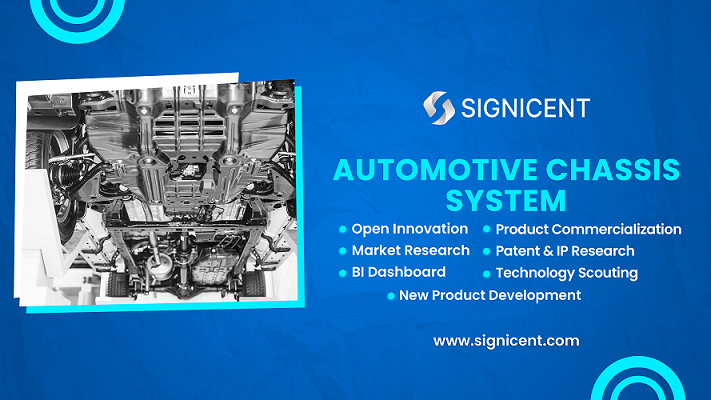Due to its remarkable adhesive and structural characteristics, epoxy resin or polyepoxides is a flexible synthetic substance that has gained favor in a variety of sectors. They are produced from epoxy polymers and are created by combining epoxy monomers with a curing agent such as a hardener or catalyst, resulting in a strong and durable material obtained by a chemical process. These are thermosetting polymers made from monomers containing at least two epoxide groups. Due to their versatile nature, they are employed in a wide range of sectors including construction, vehicle manufacturing, electronics, and so on. They can withstand massive loads without breaking or deforming because of their high tensile and compressive strength. These resins are suitable for structural applications such as composites, laminates, and fiber-reinforced composites due to this property.
The utilization of this technology in conjunction with artificial intelligence is revolutionizing material research. Researchers and manufacturers may use AI’s processing power, predictive modeling skills, and data analysis methodologies to accelerate the formulation and design of polyepoxides while optimizing their performance and features. AI-driven quality control solutions improve industrial processes by automating fault detection, improving efficiency, and ensuring great product quality. AI is critical for streamlining operations, decreasing waste, increasing output, and fostering sustainability.
The present report focuses on Novel and Emerging Artificial Intelligence technologies in the field of epoxy resins and conducting technology assessment and valuation. The report covers the following aspects:
Technology assessment and valuation and innovations on the use of artificial intelligence in the domain which includes scientific literature (NPL) and research article search, patent searches, product searches, etc. focused on the domain.
Competitive Intelligence contains the topmost key players, mergers, and acquisitions working in this domain.
Market Intelligence includes the market opportunity, and global market analysis describes various market segments like various technologies, regions, areas of use, etc.
Challenges faced in the domain
- Optimization of the composition of the multi-component epoxy resin systems because their properties depend on the system’s composition.
- Because the properties depend upon the chemical structure and composition of the system, the prediction of the physical properties like viscosity and adhesiveness of polyepoxides is another challenge.
- The flammability prediction of polyepoxides is the toughest task because it depends upon several factors like chemical structure and composition.
- Due to the chemical complexity, the coarse-graining of resin is difficult.
- Monitoring and controlling the curing process of epoxy resin is crucial for achieving the required material properties.
- Polyepoxide-based products are susceptible to defects like voids, delamination, and surface imperfections.
- Equipment observes wear and tear with time which is used in polyepoxide manufacturing like mixers, reactors, etc.
- Due to the use of hazardous chemicals and energy-intensive processes, these resin technologies have environmental implications.
How AI can overcome these challenges?
- Utilizing molecular dynamics simulations and machine learning, AI can determine the ideal composition for the resin that satisfies the required properties.
- Using machine learning models and molecular dynamic simulations, AI can also predict the resin’s physical properties, which can aid in the design and optimization of the polyepoxides for particular applications.
- An artificial neural network-based method for accurately predicting resin’s flammability.
In short, AI can improve epoxy resin’s performance in a variety of applications, predict its behavior, and optimize its properties.
Each year Signicent provides consultancy to hundreds of organizations to help transform their innovations to value.
Innovations
This section of the report focuses on the technology assessment and valuation, i.e., the latest emerging innovations based on the domain including novel technologies like patents, NPL searches, and research articles, products, etc. A few of the innovative solutions are stated below:
MD Simulation and Machine Learning-based Resin System Design MethodOcean University and Nanjing University of Aeronautics and Astronautics, China collectively introduced a solution for optimization of high-performance epoxy resin composition using molecular dynamics and machine learning methods. Steps involved in this method; MD simulation to generate a training data set, Machine learning to obtain an optimal composition proportion and Experimental validation. By using this method, the effect of different components on the material properties like toughness, Young’s modulus, and glass transition temperature can be improved and obtained automatically, quickly, and accurately.
Accurate Prediction of Epoxy Resin’s viscosity using Machine Learning
Another researcher proposed a straightforward approach to predict the viscosity of epoxy resin across a diverse range of epoxy resins using machine learning and deep learning techniques. They initially employed a coarse-grained methodology to preprocess the dataset and subsequently categorized the dataset using the K-means clustering algorithms. The researchers achieved a high-precision prediction performance, with an R2 value of up to 1.00, when evaluating the model on ten different classes in the training set.
Artificial Intelligence based analysis of glass fiber-epoxy composites using carbon nanotube fillers to improve characteristics in structure modeling
Artificial Intelligence also helps to analyze the influence of carbon nano-powder filler on the wear and thermal performance of chopped strand mat E-glass fiber-reinforced epoxy composite. Using the multiwall carbon nanotube fillers and then reacting with the resin system significantly improves the properties of the polymer cross-linking web. The outcomes obtained disclosed that there was a substantial impact on the composite’s wear behavior on the addition of carbon nano-powder. Composite’s hardness, compressive strength, and wear resistance improved by incorporating carbon nanofillers in composites.
Key players working in this domain
This section gives information about the competitive intelligence for this domain, i.e., key players who are active in this domain.
- Dow Chemical: It is a major supplier of specialty chemicals and advanced materials. For materials design, process optimization, and predictive modeling, they have been making investments in AI technologies.
- IBM Research: It leads in AI research and development globally. They work in materials science as well as other fields. They have contributed to the creation of AI algorithms and tools for the discovery, characterization, and optimization of materials, which may apply to polyepoxides.
- BASF: It is one of the biggest chemical companies in the world and is looking into how artificial intelligence and machine learning can be used in materials research and department. They are working on projects that might be relevant to the domain and involve predictive modeling, process optimization, and intelligent materials design.
- DIC: DIC analyses data from a variety of domain experiments using artificial intelligence and works on developing new techniques with the help of AI.
Market segmentation
This section gives information about market research where the market segmentation for the application of artificial intelligence in epoxy resin technology can be based on various factors and criteria discussed. Given below is the possible segmentation approach for this specific domain:
By application
- Paints & coatings
- Composites
- Adhesives & sealants
- Electronic components
- Others
By End-users
- Consumer goods
- Building and Construction
- Wind energy
- Others
By Geographical Landscape
- North America
- Europe
- South America
- Middle East and Africa
- Others
This market segmentation for 2023 takes into account the increasing trends in artificial intelligence integration within the polyepoxides technology landscape. It enables the resin providers, artificial intelligence developers, and enterprises targeting this sector to adjust their strategies, investments, and product offers to the individual demands and preferences of diverse consumers
Market Insights:
This section focuses on the market dynamics of artificial intelligence applications in the field of polyepoxides. Here are some of the market insights:
- The market size value in 2023 is expected to be USD 13.69 billion.
- The revenue forecast for 2030 is expected to be USD 22.48 billion.
- The estimated growth rate is CAGR of 7.3% from 2023 to 2030.
- Due to some encouraging developments, most notably the rising, the worldwide polyepoxides market is anticipated to see expansion in the years to come.
- The adoption of AI in polyepoxides technology is expected to drive market expansion, opening up new applications and opportunities. These may include innovative uses in sectors such as healthcare, consumer goods, aerospace, and energy storage, where epoxy resin materials can benefit from AI-enabled advancements.
- The convergence of AI and polyepoxides technology is likely to foster collaborations between polyepoxide manufacturers, AI developers, and research institutions.


